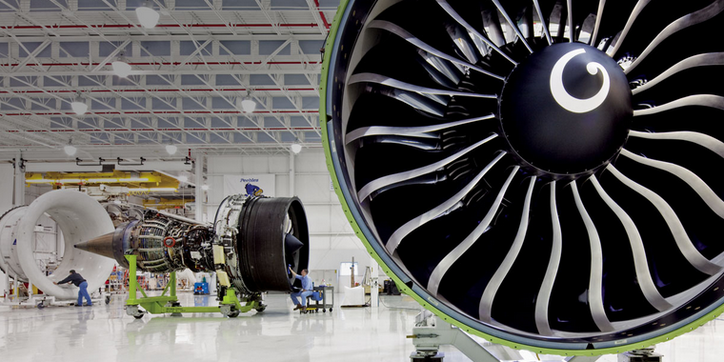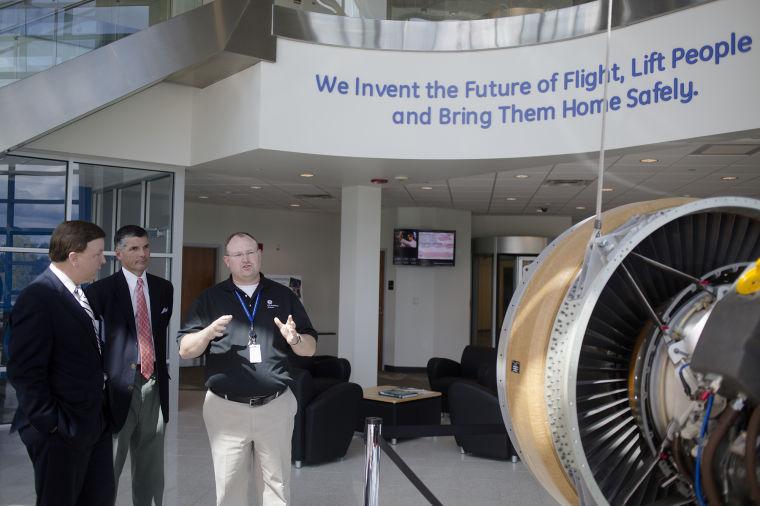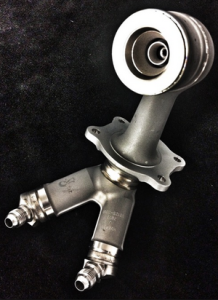Auburn, Alabama will soon be the recipient of a great deal of new additive manufacturing equipment and resources thanks to GE Aviation’s plan to introduce 3D printing in high volume. Robert Bentley, Governor of the state responded with pride:
“GE Aviation’s decision to launch a 3D printing initiative at its Auburn plant speaks volumes about the ability of an Alabama workforce to carry out cutting-edge manufacturing. This is tomorrow’s technology, and we are proud to say it will be performed right here in Alabama.”
The existing building, a 300,000 square foot facility, will be upgraded to the tune of $50 million. This comes on top of the $75 million GE has already invested in the area since 2011. The current facility opened in 2013 and currently has 70 employees, but GE expects to hire as many as 300 more to support the expansion when it is complete. GE expects to begin the installation of equipment as early as the end of 2014 and to begin utilizing the 3D manufacturing technology the following year.
 By the end of 2015, the plant could be operating approximately 10 printers with an expected potential growth to as many as 50 machines. Instead of seeing the machines as being brought in to replace employees, an all too common binary choice, often seen in American manufacturing, plant manger Joe Markiewicz welcomed the announcement:
By the end of 2015, the plant could be operating approximately 10 printers with an expected potential growth to as many as 50 machines. Instead of seeing the machines as being brought in to replace employees, an all too common binary choice, often seen in American manufacturing, plant manger Joe Markiewicz welcomed the announcement:
“The investment is a testament to GE’s commitment to this advanced technology. The Auburn team will play a vital role in the next-generation of aircraft engines, and we’re proud to be part of it.”
The mayor of the city of Auburn was equally laudatory of the company’s decision to invest in the area, “We are delighted the GE Aviation has chosen Auburn, Alabama for this advanced technology manufacturing operation. We are partners and look forward to many years of a fruitful relationship.”
Currently, the facility’s primary function is the production of precision, super-alloy machined jet engine parts. These machines are being introduced as mechanisms in the production of fuel nozzles for the best-selling LEAP jet engine. This jet engine, developed by CFM International, a collaborative effort between GE and SAFRAN, a French company, will then contain the first component of such complexity to be manufactured with additive processes.
When this engine is released, it will be used to power the Boeing 737 MAX, Airbus A320newo, and the COMAC c919. This engine is yet to be put into service, and yet to date CFM has over 6,000 orders for the engine, and as each engine requires 20 nozzles, the company is gearing up for a sharp increase in the Auburn plant’s output. The demand could spike production from the current 1,000 units per year to more than 40,000 in half a decade.
The investment in these additive manufacturing technologies indicates a clear shift in the way in which these and other parts are created. Rather than being milled or cut out of a part, the parts would be ‘grown’ – this would mean a significant reduction in the amount of material wasted in their production. Not only will the material usage be reduced, but the time required to create the parts diminishes as well, leading to a number of radiating benefits for the company.
 GE Aviation is not working in isolation, but has instead reached out to a number of local and state level compatriots who have a variety of benefits to be received from this investment. Auburn University president Dr. Jay Gogue described the potential this expanded facility creates for his community, which includes internships and co-op opportunities for his students:
GE Aviation is not working in isolation, but has instead reached out to a number of local and state level compatriots who have a variety of benefits to be received from this investment. Auburn University president Dr. Jay Gogue described the potential this expanded facility creates for his community, which includes internships and co-op opportunities for his students:
“We’re excited to expand our partnership with a global aviation leader to help enable the potential of additive manufacturing in advanced jet engine production. We look forward to working with GE Aviation experts on the workforce, research and technology requirements for high-volume production of this critical engine component.”
This type of private\public partnership is increasing in frequency as universities turn towards a greater focus on the employability of their graduates, and in the face of nationally dwindling educational resources. Other educational institutions that are hoping to gain important employment preparatory experience for their students are Southern Union State Community College and Tuskegee University. There will undoubtedly be more as the facility’s full potential becomes a reality.
What do you think about GE Aviation’s huge 3D printing plans? Discuss in the GE Avaiation forum thread on 3DPB.com
Subscribe to Our Email Newsletter
Stay up-to-date on all the latest news from the 3D printing industry and receive information and offers from third party vendors.
You May Also Like
Print to Wear: Steve Madden Goes 3D with Hilos
Footwear is evolving. That’s how Hilos’ CEO sees it, envisioning footwear as the next big industry set to scale through 3D printing. During this year’s TechCrunch Disrupt Startup Battlefield 200...
3D Printing News Briefs, October 5, 2024: JIMTOF, Sensors, Façades, & More
In 3D Printing News Briefs today, 3D Systems announced a major milestone in the commercialization of the Oqton Manufacturing OS, the 32nd Japan International Machine Tool Fair (JIMTOF) announced a...
Daring AM: The Future of Pathogen Detection is 3D Printed
Pathogen detection is essential in many industries, from healthcare to food safety. The faster harmful bacteria or other microorganisms can be detected, the better we can protect people from diseases...
A$AP Rocky Debuts New 3D Printed PUMA Shoes
Rapper and producer A$AP Rocky has collaborated with PUMA and Carbon to create a shoe. The Mostro 3D “Red” is available today at Dover Street Market, Nubian, and SNEAKERSNSTUFF, as...






































